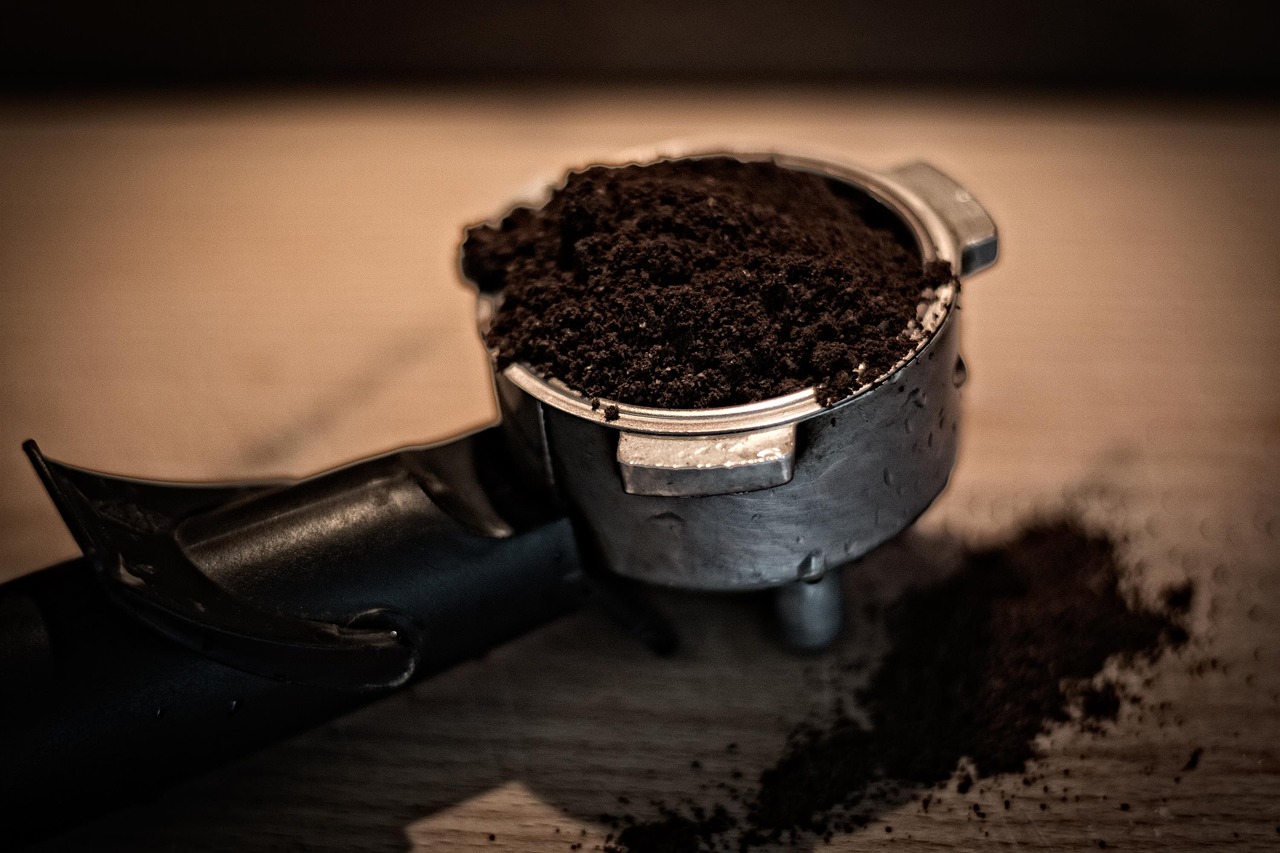Coffee, a beloved beverage worldwide, starts its journey as a green bean. But have you ever wondered why coffee powder turns brown, and sometimes, even black?
The transformation from green to brown is a result of the roasting process. When coffee beans are roasted, a chemical reaction known as the Maillard reaction occurs. This reaction between amino acids and reducing sugars in the beans leads to the development of melanoidins, compounds responsible for the dark color of the coffee. During roasting, if the beans are over-roasted and further exposed to heat after powdering, the powder may become black. Apart from this, when these roasted beans are powdered, they tend to turn black in storage. That is primarily caused due to the reactions that are caused due to exposure to air and moisture. These not only impacts the color, but also the taste, aroma and overall quality of the coffee powder.
But there’s more to this fascinating process than meets the eye. Dive deeper into the world of coffee with us below as we explore the science behind your morning cup of joe.
Why did my instant coffee powder turn black?
The discoloration of your instant coffee powder can occur due to several reasons including moisture exposure, oxidation, and heat exposure. These factors can change the color of your instant coffee from its usual brown to a darker shade or even black.
- Moisture Exposure: When coffee powder comes in contact with moisture, it may start to clump together and darken in color. Moisture allows the coffee powder to begin the brewing process, which darkens the color of the coffee. As moisture is a catalyst for chemical reactions, it can speed up oxidation and other degradation processes that can darken the coffee. Instant coffee in particular is prone to moisture absorption due to its hygroscopic nature, which can make it turn dark or black if improperly stored.
- Oxidation: Another reason could be the exposure to air. Coffee contains a variety of organic compounds, and exposure to oxygen can lead to oxidation, a chemical process that can change the color and flavor of coffee. Oxidation in coffee can result in the browning effect seen when coffee is exposed to air. This is similar to how an apple turns brown after it’s cut and left out.
- Heat Exposure: Prolonged heat exposure can also darken coffee. If the coffee was stored in a warm area, or worse, a hot one, it can start the process of roasting again. This can cause the coffee to become darker and, if the heat is extreme, turn black. The Maillard reaction, which gives browned food its distinctive flavor, can also darken coffee when it’s exposed to heat.
- Contamination: There’s also the possibility of contamination. If a foreign substance got mixed with your coffee, it might have caused a reaction that darkened the coffee. Spices like cinnamon or clove can darken coffee when mixed.
- Improper Storage: Lastly, when not stored properly, all the above factors can come into play and spoil it. Therefore, using the right storage container and placing it in a cool dry place is crucial.

How does coffee powder turn black?
The main ways by which coffee powder turns black are oxidation, and the caramelization of the sugar present in the powder.
The caramelization of sugar is primarily initiated by the presence of heat or moisture where your coffee powder is placed. Oxidation is initiated due to exposure to air or moisture. The oxidation reactions are not unique to coffee and are observed in many food items. For instance, the process of oxidation is the same reason why cut fruits like apples or bananas turn brown after being exposed to air.
If you notice that your coffee powder has turned black, it’s often safer to replace it rather than consume it. It could potentially lead to a change in flavor. Even worse, it could have mold or bacterial growth if the cause is contamination.
What chemical reaction takes place that leads to the blackening of coffee powder?
The blackening of coffee powder can be attributed to multiple chemical reactions, mainly oxidation and the Maillard reaction, both of which can be triggered or accelerated by exposure to moisture, air, and heat.
Oxidation: Oxidation is a chemical reaction that occurs when coffee is exposed to oxygen. Coffee contains many organic compounds, including polyphenols, that can undergo oxidation. Over time, these oxidation reactions can lead to a darkening of the coffee. This is a similar process to what happens when an apple slice turns brown after being exposed to air.
The Maillard Reaction: If coffee is exposed to heat, it can lead to the Maillard reaction, which is a chemical reaction between amino acids and reducing sugars. This reaction is responsible for the brown color and complex flavor developed during roasting coffee beans. If the roasted coffee (ground or instant) is subjected to prolonged heat exposure, the Maillard reaction can continue to darken the coffee.
Both of these reactions can significantly alter the color and flavor of the coffee.
However, if the coffee powder has turned black, it’s important to note that it may also be due to contamination or improper storage. If this is the case, it is advisable to replace the coffee to avoid potential health risks.
Is it OK to drink coffee powder that has turned black?
No, it is better to avoid drinking coffee from powder that has turned black. Following are the reasons:
Contamination: If the color change is due to contamination, it’s possible the coffee could contain harmful substances, making it unsafe to consume. Contaminants could include bacteria, molds, or other substances. When coffee comes in contact with air and moisture, the growth of such substances is favored.
Change in flavor: While blackened coffee powder isn’t necessarily harmful, its flavor might be compromised. Exposure to moisture, heat, or air (oxidation) can all impact the coffee’s taste, generally leading to a stale or bitter flavor.
Ultimately, if your coffee has changed color to black, it’s often best to err on the side of caution and replace it. Coffee should be stored in a cool, dry, and airtight container to maintain its quality and prevent these types of color changes.
If you are like me and hate having to throw the black coffee powder away, you don’t have to. It may be a good idea to mix it with a bit of oil (jojoba, coconut, olive mostly work), and use it as a body scrub. But always ensure doing a patch test to understand that it is not causing any reaction.

How do you reverse the blackening of coffee powder?
You cannot! Unfortunately, once coffee powder has turned black due to exposure to moisture, oxidation, heat, or contamination, the process cannot be reversed. These processes involve complex chemical reactions that alter the molecular structure of the coffee. Once these changes occur, they are permanent and cannot be undone.
Moreover, even if it were theoretically possible to reverse these changes, doing so would likely require sophisticated chemical procedures that are not practical or safe to perform outside of a laboratory setting.
In the case of coffee that has turned black, the best course of action is generally to discard the coffee and replace it with a fresh supply.
How can you prevent your coffee powder from turning black?
As we have discussed that you cannot reverse blackening of coffee powder, but it can be prevented from turning black. To prevent this from happening in the future, proper storage and handling is necessary. Here are some measures you can take:
- Avoid Moisture: Coffee can absorb moisture from its surroundings. Ensure your coffee is stored in a dry place, away from any sources of moisture. Always ensure that the spoon you are using to scoop coffee out is clean and dry.
- Cool and Dark Location: Store coffee in a cool, dark place. Direct sunlight or exposure to heat can promote the Maillard reaction and oxidation, which can darken coffee.
- Proper Hygiene: Always use clean, dry utensils to handle coffee powder. This helps avoid introducing any contaminants that could lead to discoloration or spoilage.
- Use Fresh Coffee: Coffee tends to lose its freshness once the pack is opened. Try to consume it within two weeks and consider buying smaller packs if you don’t consume a lot of coffee.
- Do Not Refrigerate: Contrary to popular belief, coffee should not be refrigerated as it can absorb smells from the fridge and the constant change in temperature can promote moisture absorption.
- Invest in a hermetic container: Whenever you need to store opened coffee packets or bags, use a hermetic container. While there will be exposure to air and moisture when you open the container, they are usually better.
- Consume within 2-4 weeks: While your coffee’s expiry date might still be a good 6-8 months away, you might not get the exact aroma and strength in the flavor. This happens as coffee begins to lose oil and aroma to air and moisture as soon as the pack is opened. So if you have opened your pack or bottle, consume it within 4 weeks or even earlier, for best results.
By adhering to these practices, you can help ensure that your coffee retains its flavor and color for as long as possible.
The bottom line
It is unfortunately very common for coffee powder to turn black in storage. Proper storage in an airtight container, away from heat, light, and moisture, is essential to preserve coffee’s quality and prevent these changes. If your coffee turns black, it’s generally best to replace it, as its flavor can be compromised and, if due to contamination, it may be harmful.
If you’re frequently encountering this issue, you might want to evaluate your storage methods or consider purchasing smaller amounts of coffee more frequently to ensure its freshness.




